Tag: Lines of Latitude
Lines of Latitude: Putting Ukraine on the map (and keeping it there)
In the 16th century, Western European Renaissance cartographers treated the Ukrainian lands as a peripheral place. Initially, Ukraine’s territory appeared only on maps that covered much larger geographical frames, such as Central Europe, Eastern Europe, or the Black Sea region. These early maps still privileged classical sources which had provided descriptions of the area, notably Herodotus, who had authored a detailed account of the Scythian lands north of the Black Sea. Other classical authors, including Ptolemy, Strabo, Pliny the Elder, and Tacitus, covered a later period when the Sarmatians, a confederation of Eastern Iranian nomadic peoples, moved westward and, by 200 BCE, began to dominate the Scythians. Their control of the Pontic Steppe brought the Sarmatians into contact with Greek and Roman communities.
In 1477, Dominicus de Lapis published the first illustrated edition of Ptolemy’s Geography, translated by the humanist Giacomo d’Angelo da Scarperia, in Bologna, Italy. Its 26 plates, which had been engraved by Taddeo Crevilli of Ferrara, included the map “European Sarmatia,” the first printed map to cover Ukrainian territory. The prestige of Ptolemy’s Geography meant that the sheets showing “European Sarmatia” and “Asian Sarmatia” continued to be standard fare for some time.
Sebastian Münster (1489-1552), Lutheran theologian, Hebrew scholar, mathematician, cartographer, and cosmographer, published four editions of Ptolemy’s Geography in his lifetime. His Geographia universalis vetus et nova (1540), printed in Basel, Switzerland, included “Tabula Europae VIII,” a map of Eastern Europe in trapezoidal form with pictorial relief, essentially Münster’s version of the sheet “European Sarmatia.” All geographical names on this map are drawn from the classical sources which Renaissance scholars prized. Rivers which dissect the Ukrainian lands are thus identified as Tyras (Dniester), Hypanis (southern Bug), Borysthenes (Dnipro or Dnieper), and Tanais (Don).
However, Münster’s 1540 edition of Ptolemy’s Geography did not contain just the Ptolemaic maps. It also featured 21 modern maps, which Münster himself had produced. Münster subsequently added new plates each time he issued a revised edition of his Geographia universalis. The 1552 edition also featured a contemporary map of Poland and Hungary, “Polonia et Ungaria, XX Nova Tabula,” based on information gleaned from the work of the Polish cartographer Bernard Wapowski (ca. 1450-1535). The Ukrainian lands west of the Dnipro (or Dnieper) River are here identified with regional labels as Russia, Volhinia, Podolia, Codimia, and Bessarabia.
Münster uses the geographical name Russia to identify the westernmost part of Ukraine, the lands of the Ruthenian domain of the Polish Crown, the Ruthenian Voivodeship. Historically this area was part of the territory of the Principality of Galicia-Volhynia (1199-1253) of the Kyivan Rus, and later the historic core of its successor, the Kingdom of Ruthenia (1253-1349). It was subsequently conquered by Lithuanians and Poles. Other Ukrainian lands west of the Dnipro River with Kyovia (= Kyiv) are shown as parts of Lithuania, within its yellow border. By contrast, the lands east of the Dnipro River are identified as Tartaria Precopien (Crimea) and Tartaria Minor, regions controlled by the Crimean Tatars. Moscovia appears in the upper eastern margin of the map, within the green border which demarcates the Tatar sphere of influence. It is shown as a territory which historically paid tribute to the Golden Horde.
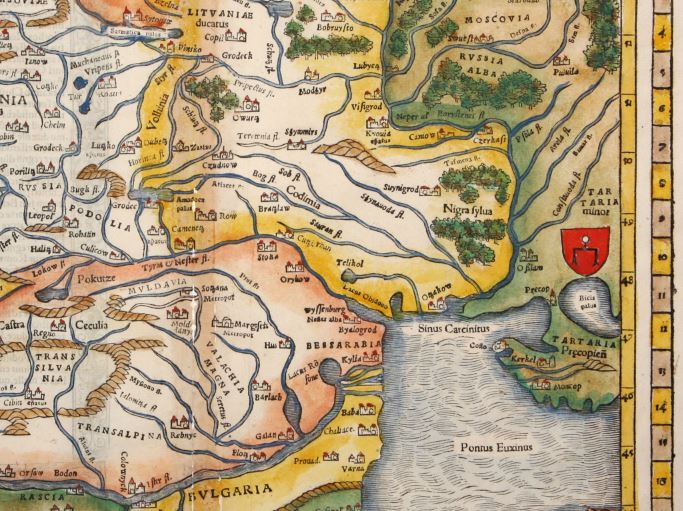
The western Ukrainian cities of Leopol (Lviv) and Halitz (Halicz), important medieval centers, are shown in the left margin next to the geographical name Russia. Münster‘s Polonia et Ungaria, XX Nova Tabula thus identifies Russia as the territory of the Kingdom of Poland’s Ruthenian Voivodeship, which existed from 1434 to 1772.
In the right margin appears the emblem of the Golden Horde (also known as Ulug Ulus, literally “Great State” in Turkic), initially the northwestern part of the Mongol Empire, later transformed into a Turkicized khanate. In the 16th century “Tartaria” was controlled by the Crimean Khanate, a successor state of the Golden Horde. This is also a device that enbles Münster to show that the Ukrainian lands were contested borderlands.
In 1618, after the Truce of Deulino, most Ukrainian lands were situated within the Polish-Lithuanian Commonwealth, but social and political crises gradually eroded its power base. Other powers tried to assert control over parts of the borderlands, including Czarist Russia, the Austrian Habsburgs and the Kingdom of Hungary, the Ottoman Empire, and the Crimean Khanate. Cossack hosts, self-governing groups of Eastern Slavic Orthodox believers, communities with military forces, grew in size, and more aggressively pursued their own interests, notably the Zaporozhian Cossacks, who established the Cossack Hetmanate.
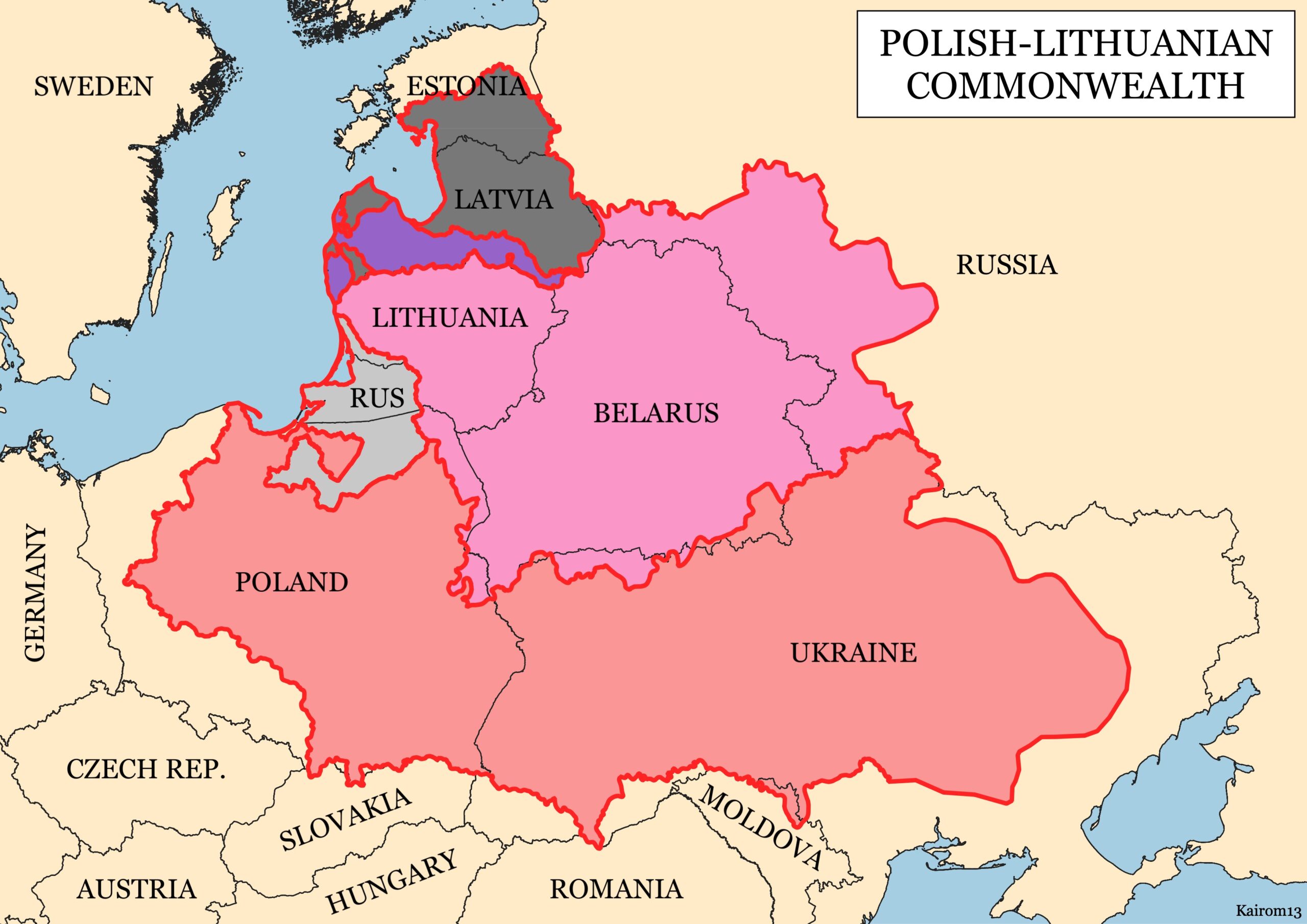
In 1613, the geographical name “Ukraina” appeared for the first time on a printed map, Magni Ducatus Lithuaniae, caeterarumque regionum illi adiacentium exacta descriptio, in English translation The Grand Duchy of Lithuania and the Surrounding Regions with Their Exact Description. This celebrated wall map, commonly identified as the Radziwiłł (or Radvila) map, has a complicated publication history: About 1585 Prince Mikołaj Krzysztof Radziwiłł (1549–1616), also known as Mykalojus Kristupas Radvila, a powerful Lithuanian magnate, commissioned Maciej Strubicz (1530-1604), a notable Polish cartographer, to produce a map of the entire Lithuanian state. Radziwiłł saw a need for an accurate map, which could be used as an efficient planning tool for administrative and military matters. He was also interested in documenting the boundaries and heritage of the old Lithuania, which had been obliterated by the Union of Lublin (1569). The Union’s political settlement had created a single state, the Polish-Lithuanian Commonwealth, both politically and culturally dominated by its Polish core.
Strubicz had served as secretary and geographer to Stephen Báthory, King of Poland and Grand Duke of Lithuania. He had drawn an important military campaign map, which aided Polish and Lithuanian forces in the final stages of the Livonian War (1577-1582), when they faced off against the Muscovite army of Ivan IV “the Terrible.” Báthory managed to force a settlement which excluded the Grand Duchy of Moscow from access to the Baltic Sea. For his services, Strubicz was subsequently ennobled in Warsaw in 1583. This map covered Livonia, as well as parts of the Grand Duchy of Lithuania and the Grand Duchy of Moscow. An improved version was published in Cologne, Germany, in 1589, by Marcin Kromer under the title Magni Ducatus Lithuaniae, Livoniae et Moscoviae descriptio.
Radziwiłł, who was nicknamed “Sierotka” [the orphan] to distinguish him from other members of the princely Radziwiłł family, served as Great Marshal of Lithuania (1579–1586) and Voivode of Trakai-Vilnius (1604–1616). He was a powerful man with connections and considerable means at his disposal. For years, he funded Strubicz’s work and provided support from others who gathered at Nesvizh Castle, the residential estate of the Radziwiłł family, today located in Niasviž, Belarus.
Strubciz’s diligent efforts greatly improved the mapping of this large section of Eastern Europe. He skillfully mined data derived from inventories, surveys, and terrain measurements. Many of these sources were produced during the Volok reform, a 16th-century land reform which led to an increase in crop yields and state revenue. The Volok reform strengthened the manorial system in Lithuania, but the reforms also reduced many Lithuanian peasants to serfdom. Land holdings were measured, divided into voloks, land units of about 52.8 acres, and entered into a cadaster, a detailed, official record of real estate boundaries, ownerships, and land values of a specific area.
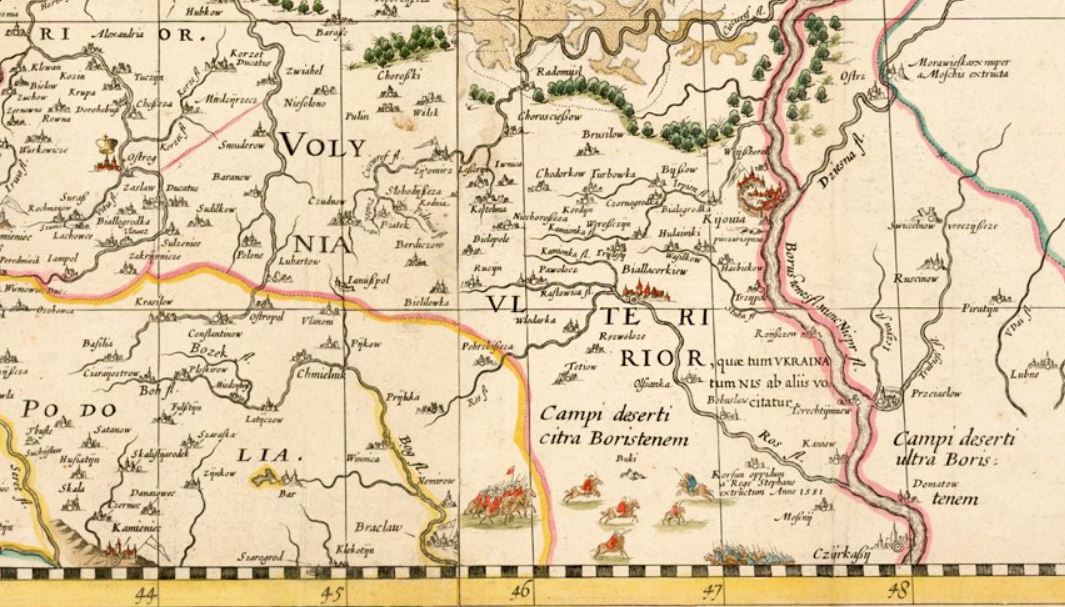
Roaming bands of Cossacks and Crimean Tatars are shown at the bottom of the Radziwiłł map of 1613, facing off against each other in the “deserted plains.” Historians like Bohdan S. Kordan, Steven Seegel, and Serhii Plokhy have long emphasized the central role Cossacks played in popularizing the geographical name Ukraine in the 17th century. Europeans identfied Ukraine as the “Land of the Cossacks.”
The map covers a vast region, stretching from Riga to Smolensk in the north, and from Cracow to Kyiv in the south. It locates 1,020 cities, towns, and villages, and very precisely maps water features throughout this vast region. It shows political and administrative boundaries, including a line which divides the ancient Grand Duchy of Lithuania in half and closely mirrors the present-day Ukrainian-Belarusian border. The region west of Kiova (Kyiv) is identified as “Volynia Ulterior, quae tum Ukraina tum Nis ab aliis volcitatur,” in English translation “Outer Volhynia, known either as Ukraine or as the Dnipro River Region.” The geographical name “Ukraina” thus describes part of the lands in the south, centered on the right bank of the Dnipro River. “Ukraina” roughly extends from Kyiv in the north to Cherkasy in the south. Strubicz identifies an area west of Cherkasy as wild steppe, “Campi deserti citra Boristenem,” in English translation “Deserted plains on this side of the river Borysthenes.”
Also included are historical notes and explanatory text, compiled by Tomasz Makowski (1575–circa 1630), a printer, artist, and engraver, who worked at the court of Prince Radziwiłł at Nesvizh Castle and also played an important role in preparing the map for publication. The English Jesuit mathematician Jacob Bosgrave was also a contributor. The Voivode of Kyiv, the Ruthenian Orthodox magnate Konstanty Wasyl Ostrogski (also known as Prince Kostiantyn Vasyl Ostrozkyi) and Józef Wereszczyński, Catholic bishop of Kyiv, provided cartographic data about the Ukrainian lands.
Prince Radziwiłł now contacted the Dutch map publisher Willem Janszoon (Blaeu) (1571–1638), famous for the manufacture of globes and wall maps, for publication of his map. Hessel Gerritsz (1581–1632), a Dutch cartographer of Blaeu’s publishing house in Amsterdam, engraved the plates, and, in 1613, Blaeu published the wall map in four sheets, under the imprint “Guilhelmus Janssonius.” He also published a related strip map of Ukraine’s Dnipro River region from Cherkasy to its Black Sea estuary on two additional sheets. Following the course of the river, the map describes the Dnipro rapids, local salt mines, towns and villages, and fortifications, and also includes notes about Cossack traditions. Blaeu eventually emerged as a noted publisher of atlases, and featured the Radziwiłł map in his Appendix Theatri A. Ortelii et Atlantis G. Mercatoris, continens tabulas geographicas diversarum Orbis regionum, nunc primum editas cum descriptionibus in 1631. The map subsequently appeared in other atlas editions through 1670.
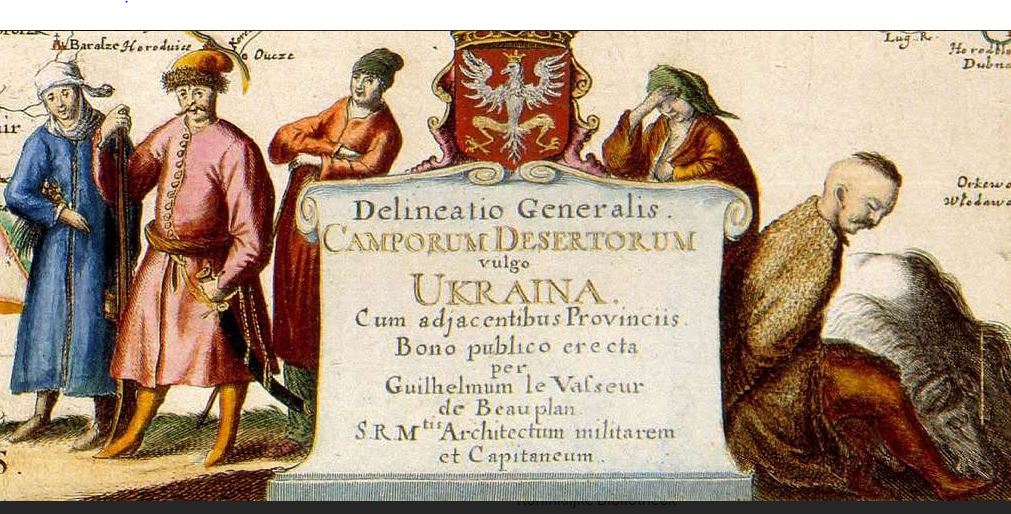
One cartographer who recognized the significance of the Radziwiłł map was Guillaume le Vasseur de Beauplan (1600-1673), a French military engineer, who served for two decades in the army of the Polish-Lithuanian Commonwealth, starting in 1630. Beauplan was initially charged with identifying suitable sites for the construction of fortifications in Ukraine. Later he planned settlements, and built or enlarged fortresses. Beginning in 1648, Beauplan turned his attention to the map trade. He published a general map of Ukraine, in 1650 followed by a special map of the same area on eight sheets, engraved in the workshop of the Dutch cartographer and map publisher Willem Hondius (de Hondt) in Gdansk.
In 1660, the Carte d’Ukranie, contenant plusieurs provinces comprises entre les confins de Moscovie et les limittes de Transilvanie, a Beauplan map published in Rouen, France, by Jacques Cailloue, boldly demarcated the boundaries of Ukraine. That same year Cailloue also published a second, enlarged edition of Beauplan’s popular Description d’Ukranie (Rouen, 1660). A third edition followed in 1661. In his writings and on his maps Beauplan carefully noted the geographical naming practices of the inhabitants of the Ukrainian lands. His decision to identify the vast region located between Transylvania and Muscovy as Ukraine reflects 17th century Cossack usage.
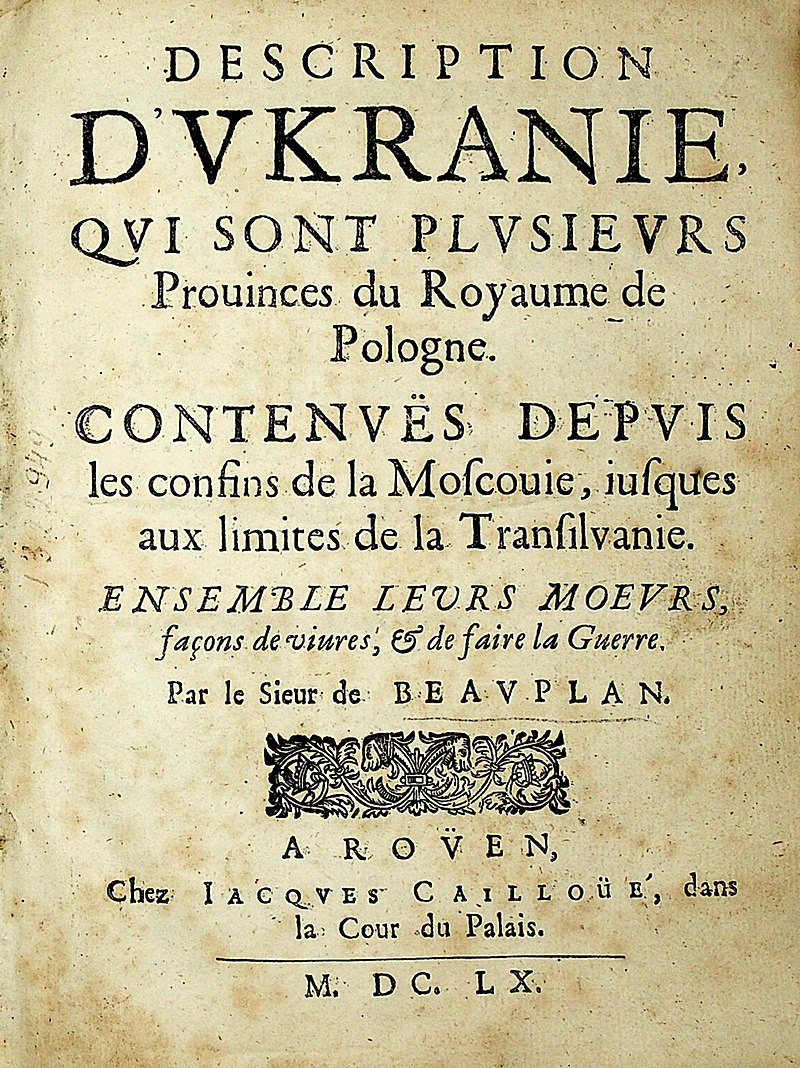
Beauplan’s maps were subsequently incorporated in Blaeu’s Atlas major (1659-72) and appeared in the 1680s in influential atlases published by Johannes Janssonius and Moses Pitt. Other cartographers now treated Beauplan’s work in Eastern Europe as authoritative, and continued to see Ukraine as “Land of the Cossacks.” For the next century and a half cartographers faithfully reproduced Beauplan’s maps in atlas compilations. Beauplan thus played a crucial role in helping to codify the usage of the geographical name “Ukraine,” for a large defined territory.
Suggested readings:
Buczek, Karol. The History of Polish Cartography from the 15th to the 18th Century. 2nd edition. Amsterdam: Meridian Publishing Company, 1982.
Kordan, Bohdan S. Land of the Cossacks: Antiquarian Maps of Ukraine. Winnipeg: Ukrainian Cultural and Educational Centre, 1987.
Kordan, Bohdan S. The Mapping of Ukraine: European Cartography and Maps of Early Modern Ukraine, 1550-1779. New York: The Ukrainian Museum, 2008.
Magocsi, Paul R. Historical Atlas of Central Europe. 3rd edition. Toronto: University of Toronto Press, 2018.
Plokhy, Serhii. The Gates of Europe: A History of Ukraine. Revised edition. New York: Basic Books, 2021.
Plokhy, Serhii. “Placing Ukraine on the Map of Europe.” In The Frontline: Essays on Ukraine’s Past and Present, 15-36. Cambridge, MA: Harvard Ukrainian Research Institute, 2021.
Seegel, Steven. Ukraine under Western Eyes: The Bohdan and Neonila Krawciw Ucrainica Map Collection. Cambridge, MA: Harvard Ukrainian Research Institute, 2011.
Lines of Latitude: How historic maps tell the story of Ukraine
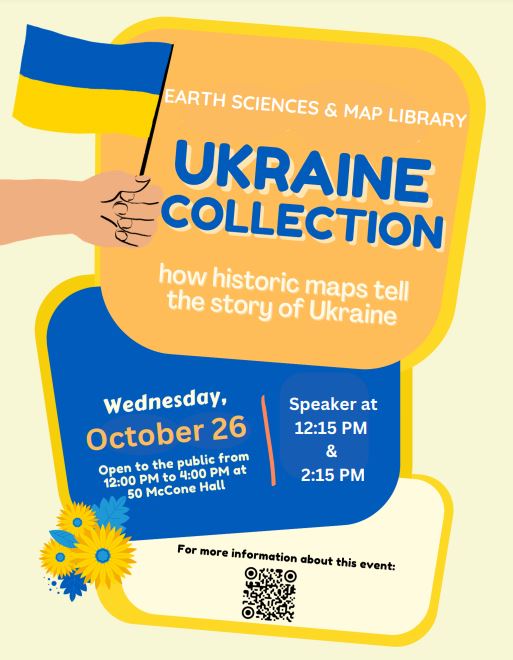
Please join us for a Maps & More program at the Earth Sciences and Map Library in McCone Hall, located near North Gate on the UC Berkeley campus, on Wednesday, October 26th.
Professor John Connelly (Director, Institute of Slavic, East European, and Eurasian Studies) will introduce a temporary exhibit of historic maps of Ukraine with brief remarks at 12:15 PM and 2:15 PM. Dr. Connelly, a specialist in East European history, currently teaches a course “Ukraine and Its Neighbors.”
Highlights from the library’s collection of Ukrainian, Central European and East European maps and atlases will be on display throughout the afternoon, from noon to 4 PM.
European Renaissance cartographers treated Ukraine as a peripheral place. That changed in the 17th century, in part due to work done by Guillaume le Vasseur de Beauplan (1600-1673), a French military engineer and cartographer, who served for two decades in the army of the Polish-Lithuanian Commonwealth, starting in 1630.
Beauplan was initially charged with identifying suitable sites for the construction of fortifications in Ukraine. Later he planned settlements, and built or enlarged fortresses. Beginning in 1648, Beauplan turned his attention to the map trade. He published a general map of Ukraine, followed by a special map of the same area on eight sheets, engraved in the workshop of the Dutch cartographer and map publisher Willem Hondius (de Hondt) in Gdansk, Poland.
 A decorative cartouche, from the map General Depiction of the Deserted Plains, Commonly Identified as Ukraine, Together with its Neighboring Provinces (Gdansk, Poland, 1648), drawn by Beauplan, who had crisscrossed the territory of the Polish-Lithuanian Commonwealth and the lands of the Cossack Hetmanate on military campaigns against Cossacks and Crimean Tatars and travelled throughout much of what today constitutes Ukraine.
A decorative cartouche, from the map General Depiction of the Deserted Plains, Commonly Identified as Ukraine, Together with its Neighboring Provinces (Gdansk, Poland, 1648), drawn by Beauplan, who had crisscrossed the territory of the Polish-Lithuanian Commonwealth and the lands of the Cossack Hetmanate on military campaigns against Cossacks and Crimean Tatars and travelled throughout much of what today constitutes Ukraine.
In 1660, a Beauplan map published in Rouen, France, by Jacques Cailloue, the Carte d’Ukranie, contenant plusieurs provinces comprises entre les confins de Moscovie et les limittes de Transilvanie, boldly demarcated the boundaries of Ukraine. That same year Cailloue also published a second, enlarged edition of Beauplan’s popular book Description d’Ukranie (Rouen, 1660). A third edition followed in 1661. In his writings and on his maps Beauplan carefully noted the geographical naming practices of the indigenous inhabitants which he encountered in these borderland areas. His decision to identify the vast region located between Transylvania and Muscovy as Ukraine reflects 17th century Cossack usage.

Maps that Beauplan produced were subsequently incorporated in Johannes Blaeu’s Atlas major (1659-72) and appeared in the 1680s in influential atlases published by Johannes Janssonius and Moses Pitt. Other cartographers now treated Beauplan’s work in Eastern Europe as authoritative and continued to see Ukraine as “Land of the Cossacks.” For the next century and a half other cartographers faithfully reproduced Beauplan’s maps in atlas compilations. Beauplan thus played a crucial role in helping to codify the usage of the geographical name “Ukraine” for a large defined territory.
Most of the maps and atlases in the collections of the Earth Sciences and Map Library cover Ukraine and associated larger frames of geographical reference, like the Black Sea region, Central Europe, or Eastern Europe in the late 19th and 20th centuries. Some were produced by the murderous regimes which sought to dominate Ukraine and its neighbors.
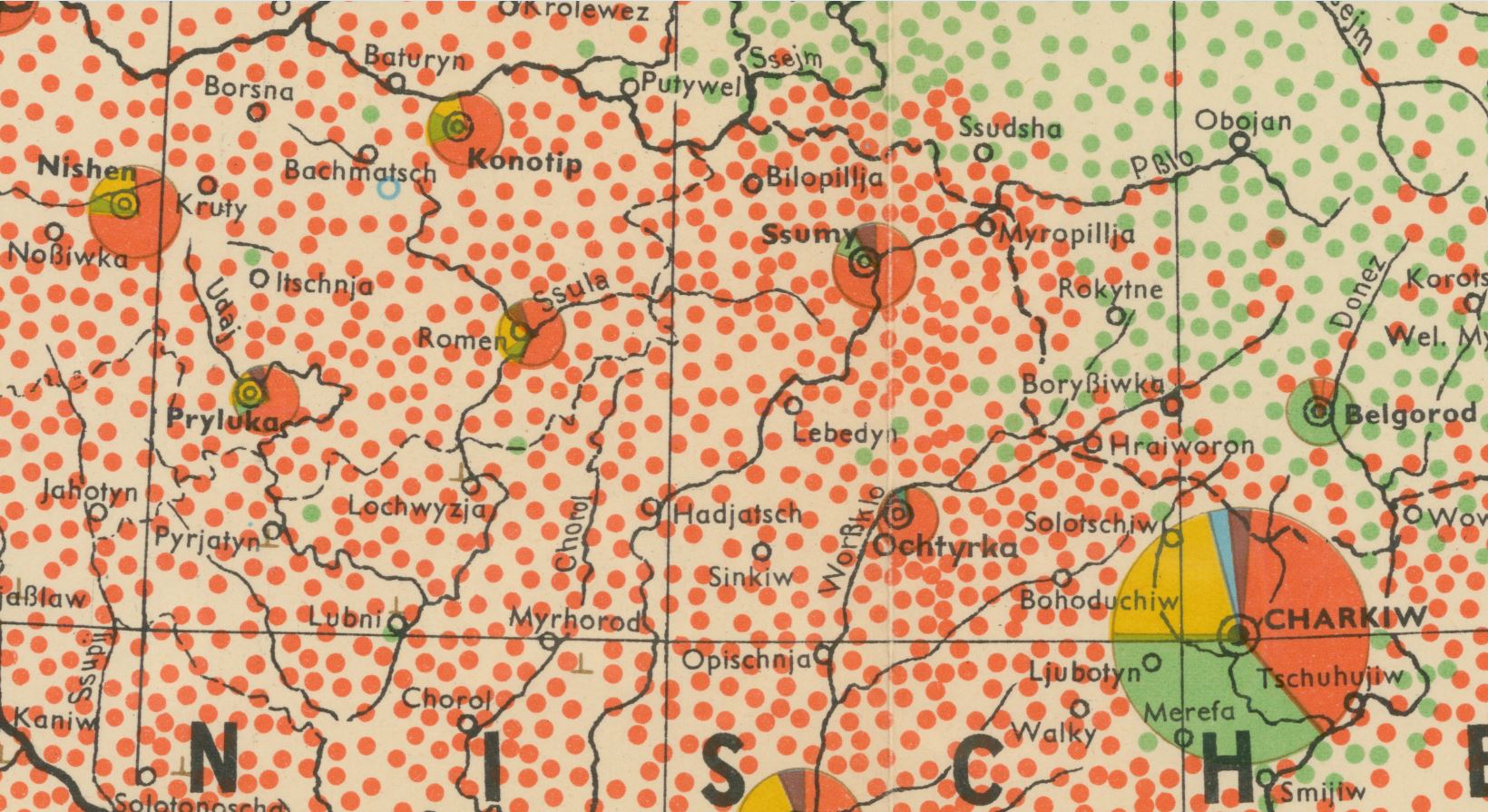 The Kharkiv region, detail from an ethnographic map of the Ukrainian S.S.R. based on the 1926 census of the Soviet Union. That census took place when Ukrainians were still free to express ethnic preferences, before the Stalinist repression, the Holodomor (the Terror-Famine of 1932-1933), and before Nazi Germany invaded the area and murdered millions of Ukrainians during World War II. In 1926, the countryside appears solidly Ukrainian. Most cities have sizable Jewish communities, in particular Kharkiv. Image source: Nationalitätenkarte der Ukraine (Berlin, 1943), from Atlas der Ukraine und benachbarten Gebiete, a loose-leaf atlas published by a Nazi Ostforschung Institute. Digitized by the UC Berkeley Library, as part of its ongoing German World War II Captured Maps digitial humanities project.
The Kharkiv region, detail from an ethnographic map of the Ukrainian S.S.R. based on the 1926 census of the Soviet Union. That census took place when Ukrainians were still free to express ethnic preferences, before the Stalinist repression, the Holodomor (the Terror-Famine of 1932-1933), and before Nazi Germany invaded the area and murdered millions of Ukrainians during World War II. In 1926, the countryside appears solidly Ukrainian. Most cities have sizable Jewish communities, in particular Kharkiv. Image source: Nationalitätenkarte der Ukraine (Berlin, 1943), from Atlas der Ukraine und benachbarten Gebiete, a loose-leaf atlas published by a Nazi Ostforschung Institute. Digitized by the UC Berkeley Library, as part of its ongoing German World War II Captured Maps digitial humanities project.
And finally, one of the most visually stunning maps in the collections of the Earth Sciences & Map Library:
Detail from Sergei V. Pozniak’s pictorial map The Kiev-Pechersk Lavra (Kyiv, 1994), a perspective view of Kyiv-Pechers’k Dormition Lavra, also known as the Kyiv Monastery of the Caves, founded in 1051, a preeminent center of Eastern Orthodox Christianity.
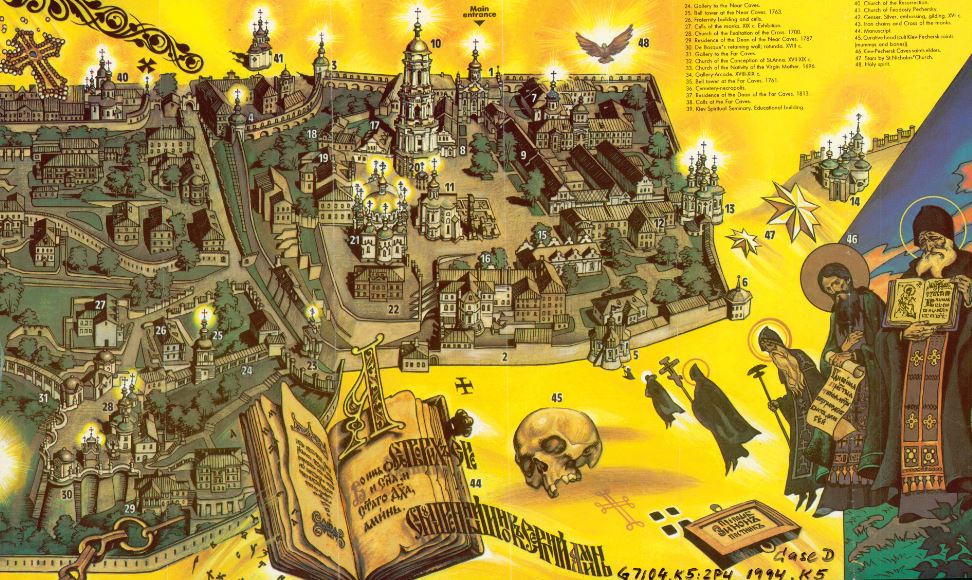
This event marks a return of the Earth Science & Map Library’s Maps and More Pop Up Exhibit Series.
Open to all audiences.
Event contact: eart@library.berkeley.edu, 510-642-2997
Access Coordinator: Susan Powell, smpowell@berkeley.edu, 510-642-2997
The Man who anchored Ukraine in the West: Mykhailo Hrushevsky and the historical geography of Eastern Europe
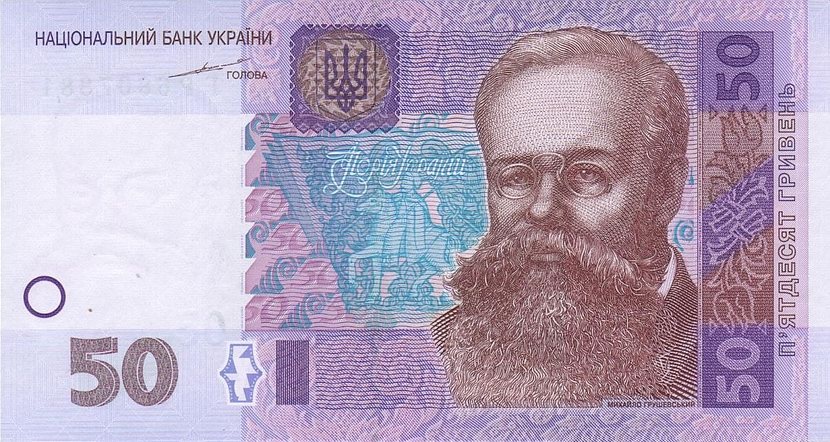
I remember sitting in a lecture hall at the University of Hamburg in 1986 during my sophomore year. Friends had told me to come early and I watched as every single seat gradually filled up. There was a lot of chatter.
A middle-aged man stepped onto the podium, Klaus-Detlev Grothusen, a scholar of Eastern European history. Two graduate assistants set up a record player, unrolled a wall map, left a pile of books on his lectern. Grothusen was a man who loved what he was doing. Within the first 20 minutes of his ”Introduction to East European History” he had already fit in extended passages from Gogol’s Dead Souls and played a recording of a Ukrainian children’s song to illustrate his points. The students were laughing.
Then Grothusen switched gears and put on his analytical hat. The essential building blocks of East European history, he argued, were the histories of the multiethnic empires that had long dominated the region. Grothusen pointed them out on the wall map. He pointed to the Ottoman Empire which controlled much of the Balkans. Then he looked at the center of the map, focused attention on the Polish-Lithuanian Commonwealth. It was surrounded by three dynastic empires, Tsarist Russia, the Austrian Habsburg Empire, and the Kingdom of Prussia, whose leaders would later construct and dominate the German Empire. The wall map illustrated how those three powers carved up the Kingdom of Poland and the Grand Duchy of Lithuania in three partitions in the late eighteenth century (1772, 1793, 1795). Grothusen discussed that in some detail.
In Central and Eastern Europe, nation states were latecomers. Many only appeared on the map after the Balkan Wars (1912-1913) and the end of World War I (1918-1919). Some of those East European nation states disappeared again, when the Soviet Union revealed its imperial ambitions. In 1986, Grothusen argued that those imperial ambitions were still very much alive.
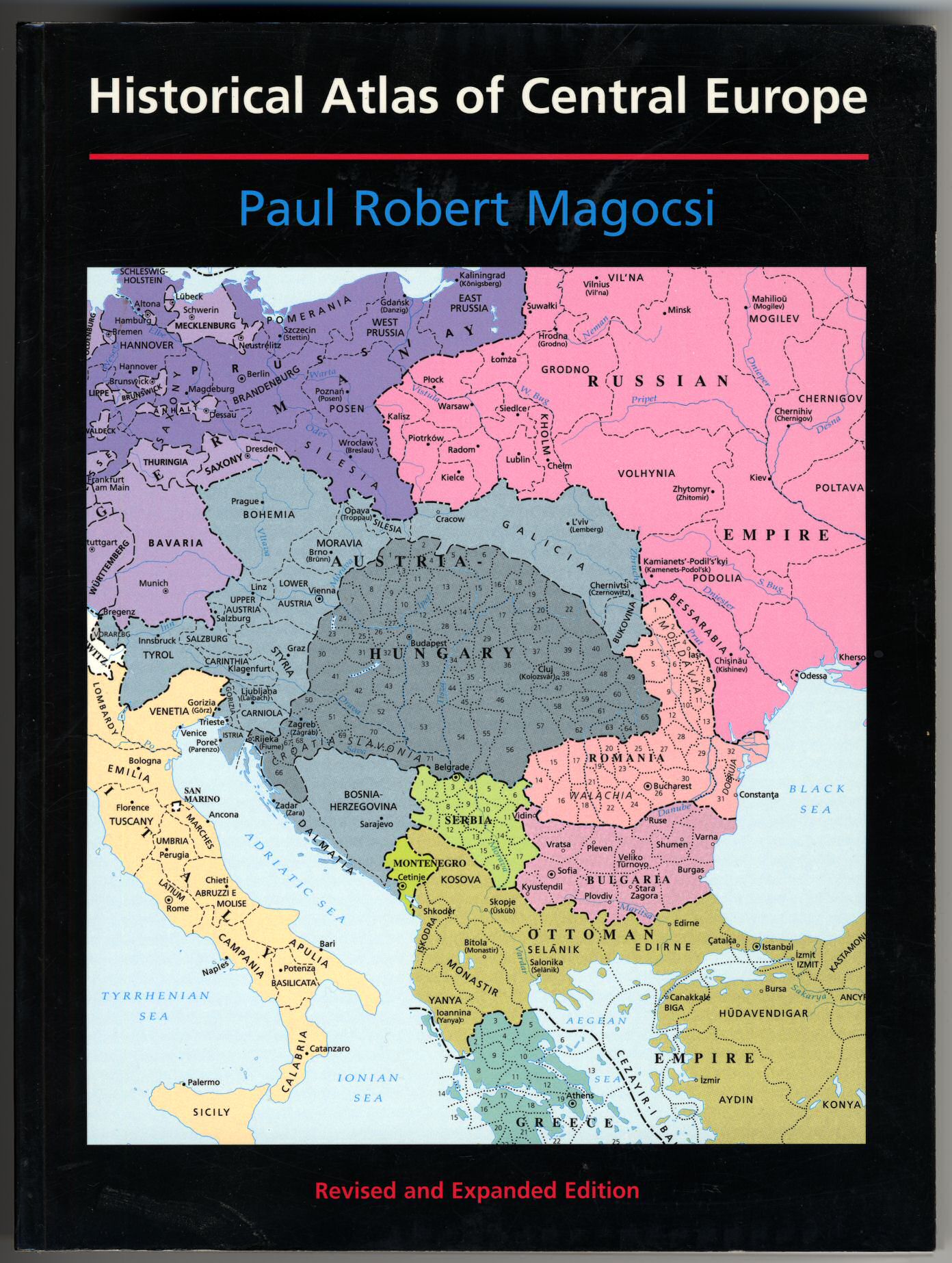
Some historical atlases tell this story well. Paul Robert Magocsi, the John Yaremko Chair of Ukrainian Studies at the University of Toronto, authored one of my favorites. The cover illustration of his Historical Atlas of Central Europe , first published in 1993, and now republished in a third edition in 2018 by the University of Toronto Press, gave me pause earlier this week. It shows Central Europe in 1910, on the eve of the Balkan Wars, still dominated by multiethnic empires.
Russian imperial historians, men like Nikolay Karamzin, Sergey Mikhaylovich Solovyov, Vasily Osipovich Klyuchevsky, and Mikhail Petrovich Pogodin, long ago identified the medieval Kyivan Rus’ as the first authentic state of the Eastern Slavs and laid claim to its legacy. The demise of the Kyivan state, they argued, meant that the center of political gravity shifted far to the northeast, away from Kyiv, to the Central Russian Principality of Vladimir-Suzdal. Initially, the rulers of the town of Moscow were just bit players, overshadowed by their more powerful neighbors, first Suzdal, then Vladimir, then Tver. In the 15th century, however, these historians declared, Moscow finally stepped out of the shadows to fulfill its imperial destiny: After the fall of Constantinople in 1453, court scribes proclaimed that the Tsarist autocracy had a valid title to be the successor of the Roman and Byzantine empires. Moscow thus stepped into her new, self-appointed role as the “Third Rome.”
The tsar himself, the embodiment of sovereign authority, stood at the center of Moscow’s autocracy. By the early 18th century, the tsar claimed to be the “Emperor and Autocrat of All the Russias.” And those ”Russias” were carefully enumerated, first and foremost Great Russia (Velikaya Rossiya or Velikorossiya), the territorial core of the Grand Duchy of Moscow; secondly White Russia (Belaya Rossiya), what is still called Belarus today; and finally Little Russia (Malaya Rossiya or Malorossiya), today the independent country of Ukraine.
Vladimir Putin has seized upon this carefully crafted story in his speeches and writings, because it provides a useable national past and seemingly, in his eyes, historical legitimacy for his dangerous and murderous pipedreams of reviving the Russian imperium. According to Putin all Eastern Slavs are essentially Russians, “one people,” a “yedinyi narod.” Fiona Hill eloquently questioned these claims in a recent Politico interview, singling out Putin’s vision of a “Russky Mir” or “Russian World.” Putin and Sergey Lavrov have long argued that Ukraine does not really exist, that its national territory is properly identified as “Novorossiya,” or “New Russia.” Both deny the right to self-determination to Ukrainians.
How do we answer that? Where can we look for an answer? The very idea of what Ukraine represents is wrapped up in another historical narrative, one that was carefully crafted by the leader of the Ukrainian national movement, the historian and statesman Mykhailo Serhiiovych Hrushevsky (1866-1934). As a young scholar, with his published thesis in hand, Hrushevsky was handed a tremendous gift, he was appointed chair of Ukrainian history at Lviv University. This was a newly created position, the very first one of its kind.
Lviv, that great western Ukrainian city, was at that time located in the easternmost reaches of the Habsburg Empire’s province of Galicia. It was the seat of key institutions which spearheaded the Ukrainian cultural revival, the Ukrainian Greek Catholic Church, the Shevchenko Scientific Society, and also the Prosvita society, founded in 1868 and dedicated to spreading literacy and education in the Ukrainian language.
Lviv was about the only place where Ukrainian national aspirations could be publicly voiced at this time and Hrushevsky seized that chance. In 1897 he was elected president of the Shevchenko Scientific Society, and rebuilt it to function as a Ukrainian Academy of Sciences-in-exile, with popular and scholarly journals, a publishing house, a library, and a museum.
As a historian and ethnographer, Hrushevsky reconstructed the story of Ukraine’s past, most notably in his magisterial ten-volume History of Ukraine-Rus’, the first major synthesis of Ukrainian history. The first volume appeared in 1898, the final one was published posthumously, in 1937. Hrushevsky summarized his key ideas in an article in 1904, “The Traditional Scheme of ‘Rus’ History and the Problem of a Rational Ordering of the History of the Eastern Slavs.” This seminal essay immediately ignited heated debates because Hrushevsky claimed what should have been obvious all along, that the Ukrainians, Belarusians and Russians had distinct identities and histories, which deserved separate historical treatments.
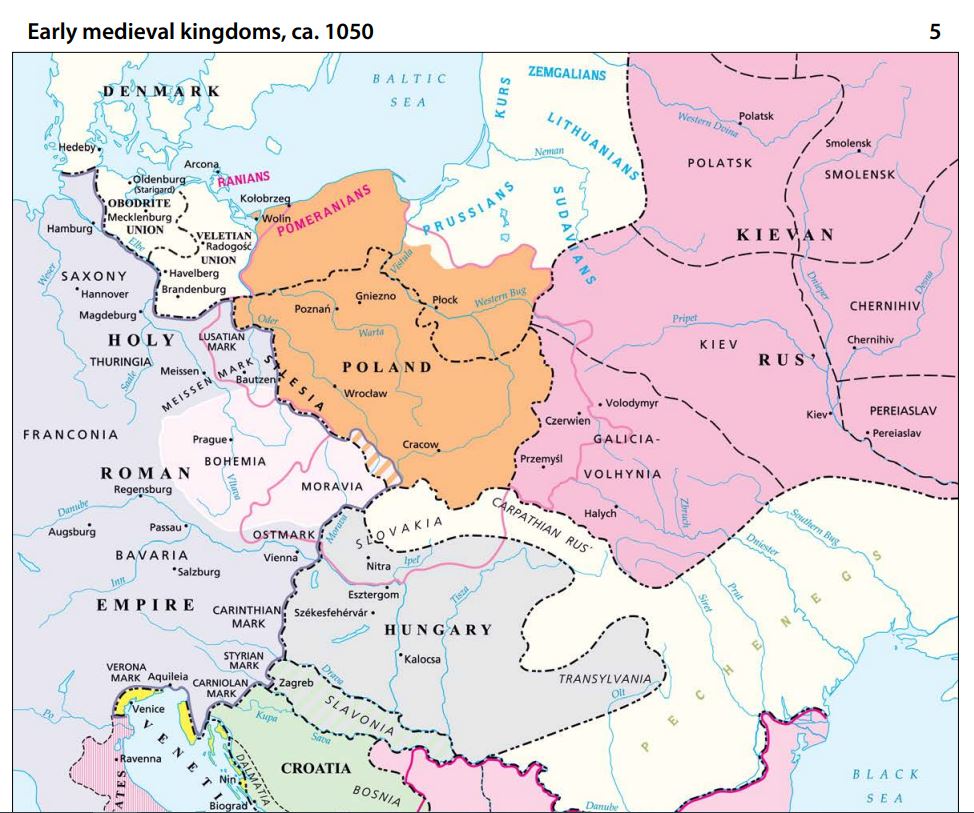
The two principalities of Galicia and Volhynia made up the the westernmost part of the Kyivan Rus’ and were united in 1199 by Grand Prince Roman the Great of Kyiv (Source: Magocsi’s Historical Atlas of Central Europe).
Hrushevsky firmly anchored Ukraine’s history in the West: He showed that the Kyivan Rus’, with its distinct political-administrative structure, socio-economic base, culture and laws, was the creation of southern tribes of the Eastern Slavs. After the disintegration of the Kyivan Rus’, Hrushevsky looked to the southwest and identified a new center of political gravity there. He tied the history of Ukraine to the Principality of Galicia-Volhynia (1199-1253) and the Kingdom of Ruthenia (1253-1349) which emerged out of it. The center of the Ruthenian kingdom, ultimately conquered by Lithuanians and Poles, and absorbed by the Polish-Lithuanian Commonwealth, survived relatively intact as the Ruthenian domain of the Polish Crown, it formed the Ruthenian Voivodeship. Hrushevsky thus tied the history of Ukraine (and likewise the history of Belarus) to the Polish-Lithuanian Commonwealth, and not to the Tsarist autocracy.
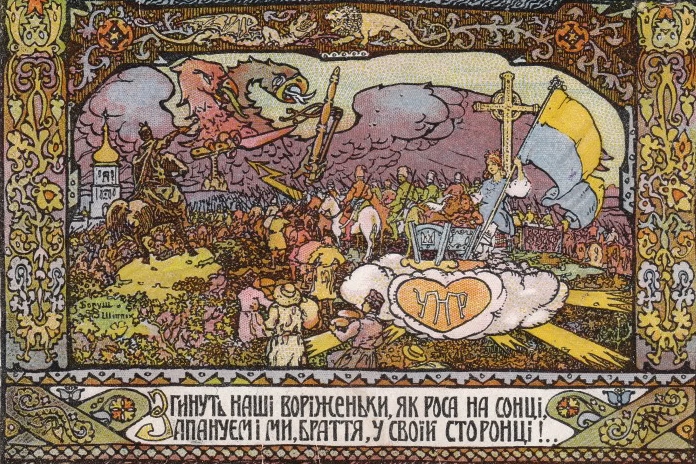
The unraveling of Tsarist power during the February Revolution, the first stage of the Russian Revolution in 1917, opened new possibilities. The Tsentralna Rada (Ukrainian Central Council) in Kyiv, the All-Ukrainian council (soviet) of the Ukrainian People’s Republic, elected Hrushevsky as chairperson. Under his direction, this body soon became the revolutionary parliament of Ukraine. Hrushevsky joined the newly formed Ukrainian Party of Socialist Revolutionaries, the majority party. In June 1917, the Ukrainian People’s Republic declared its autonomy and was recognized by the Prime Minister of the Russian Provisional government, Alexander Kerensky. In January 1918, after the Bolsheviks took control in Russia, the Rada proclaimed Ukraine an independent and sovereign state. Three weeks later, the New York Times published excerpts from Hrushevsky’s “Ukraine’s Struggle for Self-Government” and introduced him as “one of the new republic’s most eminent men.” As a radical democrat Hrushevsky successfully opposed a Bolshevik takeover and in April 1918 he was elected president, after the Rada adopted a Ukrainian constitution. But Hrushevsky was soon overthrown in a coup d’état by conservative power brokers. The Ukrainian Bolsheviks decamped for Kharkiv, Ukraine’s second-largest city, and established a rival government there, the Ukrainian Soviet Republic, aided by the bayonets of the Red Army. In the end, the Ukrainian War of Independence (1917-1921) ended disastrously for Ukrainians, their country was divided by Poland and the new Bolshevik regime.
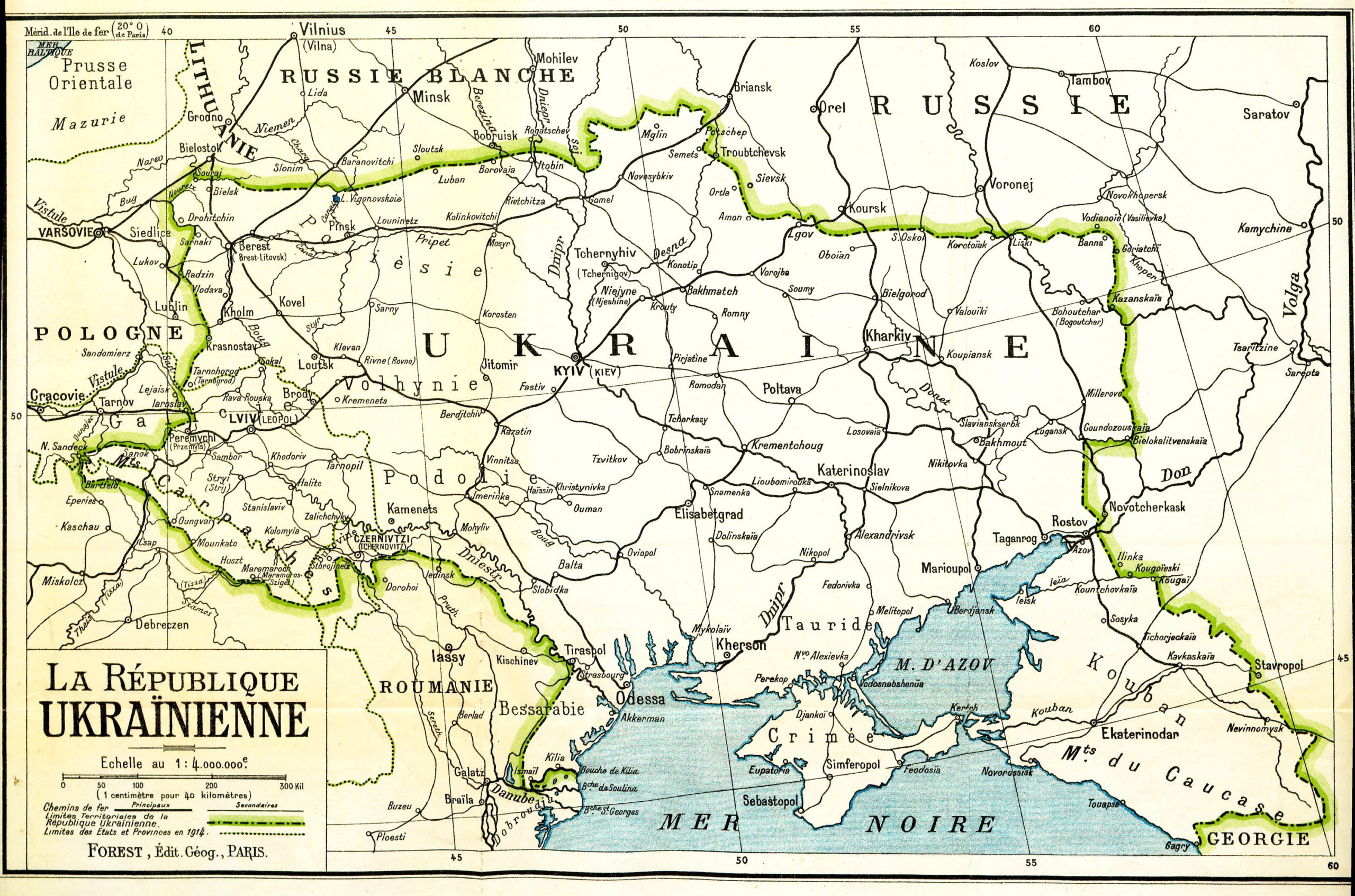
Map of Ukraine, showing the country’ proposed borders. Prepared for the Paris Peace Conference at the end of World War I, 1918.
The Ukrainian Soviet Socialist Republic, also known as Soviet Ukraine, was one of the constituent republics of the Soviet Union. In 1923, its All-Ukrainian Academy of Sciences elected Hrushevsky as full member and he returned to Kyiv. He held the chair of Modern Ukrainian History and edited the journal Ukraïna from 1924 to 1930, the official publication of the historical section of the All-Ukrainian Academy of Sciences. By 1929, with the power of Stalinist operatives on the rise, attacks on Hrushevsky increased, for not adopting official Soviet Marxist interpretations. He was arrested in March 1931, subjected to constant surveillance, and forced to live in Moscow. Like many other Ukrainian intellectuals, most of his students and co-workers were arrested and repressed. Many subsequently died, murdered by the Stalinist regime. Hrushevsky himself died in suspicious circumstances, after what should have been minor surgery, in 1934.
I thought of Klaus-Detlev Grothusen several times these last weeks, how his eyes lit up when he played music composed by Tchaikovsky, or when he read poetry from Taras Shevchenko’s Kobzar, one of the seminal works of Ukrainian literature. But I also remember Grothusen’s discussion of the Stalinist system. He quoted Stalin himself, who tried to legitimize his methods by saying darkly that “Russians need a tsar.”
Stalin and Putin share the belief that coercion and autocracy are essential tools in their tool chest. Ukraine, a country that was brutally repressed by Stalin, is now attacked by Putin who seems determined to liquidate its independence. Ukraine is a viable nation state, Europe’s second-largest country, with 44 million Ukrainian citizens. Let’s all help to make sure Ukraine endures and flourishes.
Lines of Latitude: German Army Map of Spain 1:50,000 (1940-1944)
Beginning in 1936, a newly-formed German military mapping agency produced a large number of topographic map series covering all parts of Europe at various scales, as well as much of northern Africa and the Middle East.
This organization started out as a back room department of the German Army General Staff, focused on military contingency mapping. But, given the murderous goals of the Nazi regime, it quickly morphed into something else, a military mapping agency which provided planning tools for the Nazi leadership to wage a war of conquest, marked by atrocities and unspeakable crimes.
Berkeley’s Earth Sciences and Map Library owns 20,000 German topographic sheet maps produced by the German Army General Staff’s mapping agency, the Directorate for War Maps and Surveying [= Abteilung für Kriegskarten- und Vermessungswesen]. The Berkeley Library obtained this historically significant collection by participating in the World War II Captured Maps depository program of the U.S. Army Map Service.
A presentation by Wolfgang Scharfe, a geography professor at the Free University of Berlin, at the International Cartographic Conference in Durban in 2003, sheds light on the history of these military map series published by the Directorate for War Maps and Surveying. Scharfe looked at one particular topographic map series covering Spain, published in 2 editions between 1940 and 1944, Spanien 1:50 000.
German military cartographers mapped Spain at different scales. The Nazis saw Spanish dictator Francisco Franco’s fascist regime as an ally, but Franco wisely remained neutral during World War II. Initially, the German military mapping of Spain can be seen as part of an effort to bring the Franco dictatorship into the Second World War as a German ally. One goal was the capture of the important British base at Gibraltar, at the entrance to the Mediterranean Sea.
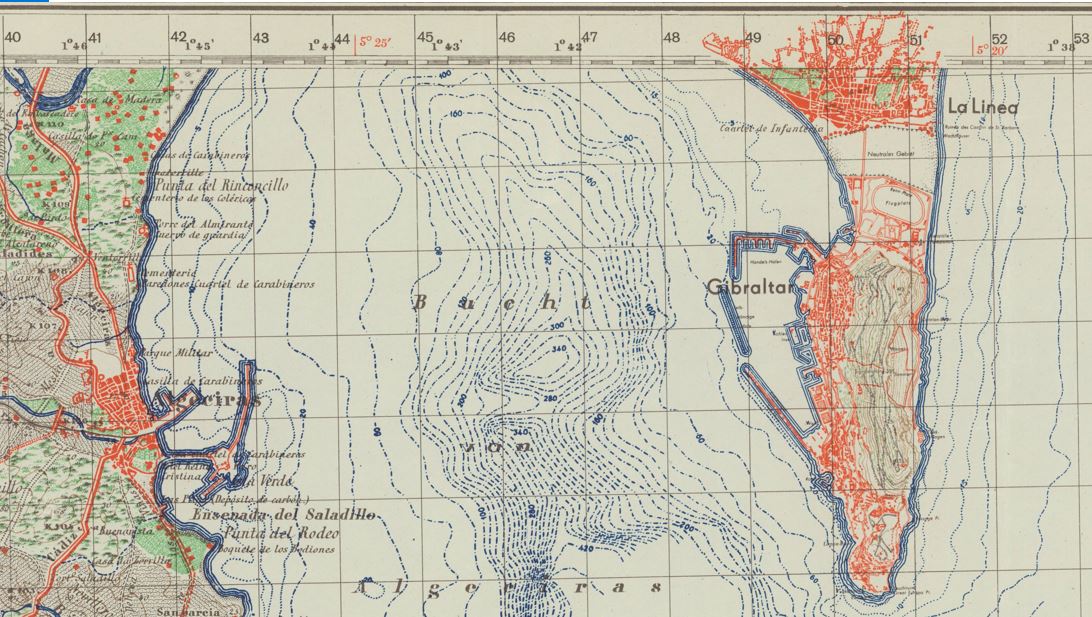
The Bay of Gibraltar, also known as Gibraltar Bay and Bay of Algeciras, identified on the German sheet La Linea-Gibraltar as Bucht von Algeciras. It is located at the southern end of the Iberian Peninsula, near where the Atlantic Ocean and the Mediterranean Sea meet. The sheet is overprinted with the Spanish Lambert Grid, obtained by German military cartographers in an undercover intelligence operation.
The Berkeley Library set of the German Army Map of Spain 1:50,000 consists of 901 sheet maps, accompanied by 3 index maps. It includes two editions of many topographic sheets which cover specific areas of Spain. First Special edition [= Sonderausgabe] sheets were issued between 1940 and 1944, while the second Sonderausgabe sheets were chiefly issued in 1941.
The source map data for the German military maps came from a Spanish map series, the Mapa topográfico de España en escala de 1:50,000 issued by the Direccion general del Instituto Geográfico Catastral y de Estadı́stica.
Scharfe explains that map specialists of the Army Planning Chamber [= Heeresplankammer], the Berlin-based production platform of the Directorate for War Maps and Surveying, copied the Spanish map data. The first edition of this map series (895 published sheets) only contained the Spanish map data. The maps show drainage, roads and trails, railways, vegetation, and other physical and cultural features.
Sheets of the second edition (612 sheets), however, were overprinted with the Spanish Lambert Grid, a geodetic grid which would allow German troops to use the maps to accurately rain down middle and long-range artillery fire on precise locations.

Detail from the Madrid sheet of the German military topographic map series Spanien 1:50 000, published by the Directorate for War Maps and Surveying, a military mapping agency administratively subordinated to the German Army General Staff.
The German military cartographers were able to acquire this secret Spanish military grid data for their own sheets, before that data even appeared on Spanish military maps. This was the result of a German undercover intelligence operation. German agents were able to draw on contacts established when the Nazis aided the fascist Franco dictatorship during the Spanish Civil War (1936-1939) by sending German troops to Spain, the so-called Legion Condor.
But the story does not end there: Scharfe relates that in 1943, irregular Spanish soldiers raided a German Army depot in Nazi-occupied southern France. They removed sheets of the German Army Map of Spain 1:50,000 with the secret Spanish military grid data. Spanish officials started an official inquiry which undoubtedly further undermined trust between the fascist Franco regime and the Nazis. Spanish diplomatic demands for explanations registered in Berlin proved unsuccessful.
Lines of Latitude: Martha Krug-Genthe, pioneering woman geographer and author of Valley Towns of Connecticut (1907)
In December 1904, American geographers gathered in Philadelphia to launch a new professional society, the Association of American Geographers (AAG). Geography was a new discipline in the United States. The first geography department had just been established one year earlier, at the University of Chicago. Up to this point, no forum existed for the regular exchange of ideas among professional geographers. The only publication devoted to the dissemination of scholarly geographical research was the Bulletin of the American Geographical Society.
The Association of American Geographers did not serve women geographers well: For much of its early history, the AAG organized male college and university geographers. Standard program features of AAG meetings, for example the prominent “smoker” social, made clear that the presence of women was not always welcome. At the 1915 annual meeting of the AAG, discussions of geographic education were cancelled altogether, to avoid both the topic and having “prim schoolmarms” at the smoker.
Only two women were among the 48 AAG charter members, Ellen Churchill Semple and Martha Krug-Genthe. Semple’s story is well documented, she has become a reference point in the pantheon of American geography, the representative pioneer woman geographer. In contrast, Krug-Genthe’s life has remained largely unexamined, in part because she was an immigrant woman and a sojourner who only spent a decade in the United States. Her professional endeavors are nevertheless illuminating:
Martha Krug-Genthe was the only one of the AAG founders in attendance in Philadelphia with a doctoral degree in geography. A recent transplant from Germany, Krug-Genthe had earned her doctorate at the University of Heidelberg in 1901 under the supervision of Alfred Hettner, a rising star in the profession. Martha’s dissertation examined how hydrographic charts had been used to map ocean currents. She analyzed the Gulf Stream and its northeastward extension, the North American Current, to map the expanding knowledge in the field of oceanography.
Martha Krug-Genthe and her spouse Karl Wilhelm Genthe represented something new, two young married research scientists who both insisted on pursuing professional careers. Karl had first arrived in the U.S. in 1897, after earning his Ph.D. in zoology at the University of Leipzig. In 1901, he transferred to Trinity College in Hartford, Connecticut, and ultimately was appointed assistant professor of Natural History. With his professional future somewhat assured, Karl returned to Germany to marry Martha.
Initially, Martha was able to leverage her German credentials. In 1901, just after her arrival in the United States, National Geographic Magazine published her 14-page article surveying the German geography scene. She was able to gain a teaching position at Beacon School in Hartford, a secondary school for young women.
Connecticut’s geography emerged as a particular focus of Krug-Genthe’s research, the natural outgrowth of her work as a secondary school geography teacher. In 1907 the Bulletin of the American Geographical Society published her well-received Valley Towns of Connecticut, the work for which she is most remembered today.
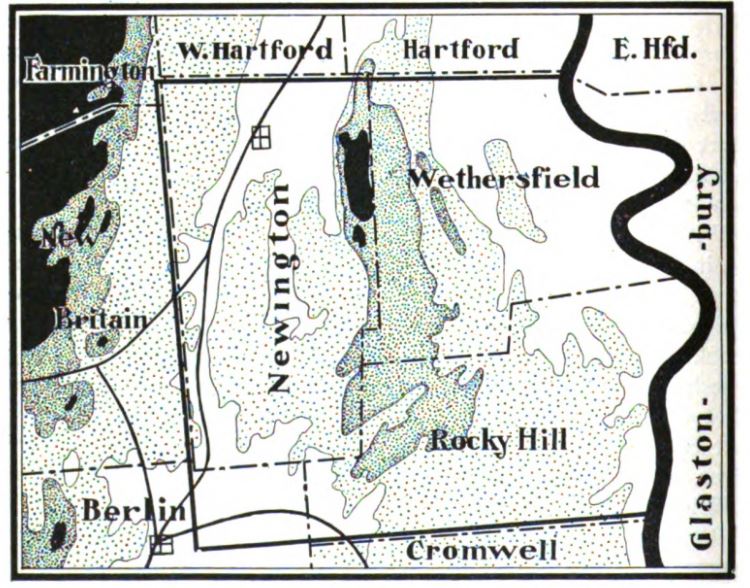
Topography of Newington region, Connecticut River Valley, from Krug-Genthe’s Valley Towns of Connecticut.
This was regional geography, a study of the economic factors driving the evolution of an urban system. Martha used historical sources but also location analysis to explain the rise of Hartford as the pre-eminent center of the Connecticut River Valley.
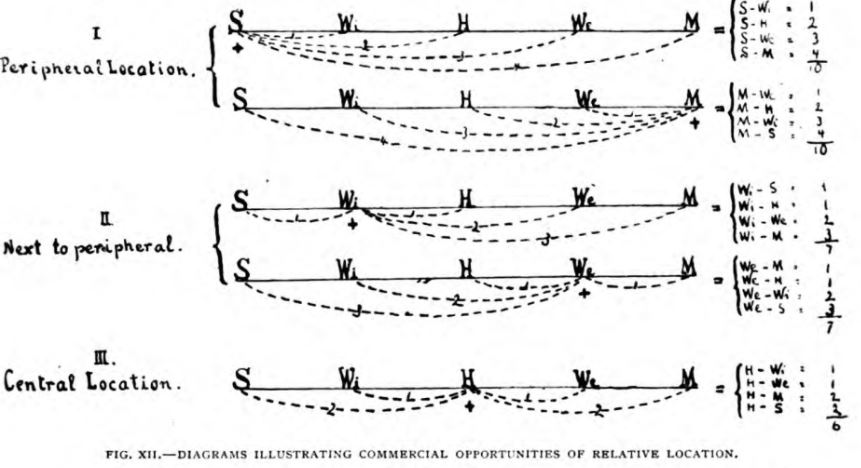
Location analysis diagram from Valley Towns of Connecticut, illustrating Krug-Genthe’s argument how its central location in the Connecticut River Valley favored Hartford (H).
In October 1903 Martha authored an article about geography textbooks for the Geography Teacher. This was the first of a long series of articles written by Krug-Genthe which discussed aspects of geography education in the United States and appeared in German and U.S. geography and science education journals.
The 1904 meeting of the International Geographical Congress Washington, D.C. was the high point of Martha Krug-Genthe’s professional career. Martha was selected to deliver the “Hommage,” an address commemorating Friedrich Ratzel, the pre-eminent cultural geographer of this time. She also presented a paper on “School geography in the United States” in the section on geography and education.
Issues of geographical education had historically been the one gateway open to women geographers who presented at International Geographical Congresses, beginning with a report by Clémence Royer at the Paris Congress in 1875. This was still true for the Washington Congress of 1904: Four of the five women listed in the congress program presented on pedagogical topics.
Martha Krug-Genthe was ultimately appointed associate editor of the Bulletin of the American Geographical Society. That affiliation bolstered her professional credentials, it was her one remaining secure foothold in the world of academic geography. Not surprisingly, the position appears in the author directory of the Encyclopedia Americana next to her name. It legitimized her role as expert.
But excluded from teaching positions at colleges and universities, Martha Krug-Genthe, just like other professional women geographers, increasingly relied on alternate professional networks which consisted of women geographers teaching at normal schools and secondary schools.
A large number of geography teachers in American secondary schools in the early 20th century were women. Professional women geographers were also well-represented among the geography instructors at the normal schools who trained these teachers. By the 1910s, normal schools hired more specialists in geography education, a process that gained momentum as the number and range of geography course offerings increased.
In 1917, shortly after the founding of the National Council of Geography Teachers, its membership roster boasted the names of 645 women, more than two-thirds of the organization’s members. The American Society of Professional Geographers likewise was able to recruit a larger number of women members.
So why did the AAG fail Martha Krug-Genthe and American women geographers? In her 2004 presidential address to the Association of American Geographers Janice Monk provides the answer: “For academic men, including geographers, aspirations for professional standing, research credentials, and disciplinary prestige meant building masculine preserves, the practice and sometimes articulation of values that placed women and men in different places and in places of unequal power.” The male AAG leadership had consciously constructed an exclusionary business model which relegated women geographers to the sidelines.
Lines of Latitude: The Long Shadow of Vienna’s Militärgeographisches Institut (1818-1918)
Beginning in the 1840s, the Kaiserliches und Königliches Militärgeographisches Institut [= Imperial and Royal Military Geographical Institute] of the Austro-Hungarian monarchy published many thousands of quality topographic sheets covering much of Central and Eastern Europe, areas where the Habsburg empire had strategic interests. These sheets did not just survey the territory of the Austro-Hungarian monarchy, they also provided solid coverage for neighboring parts of the Ottoman and Tsarist empires.
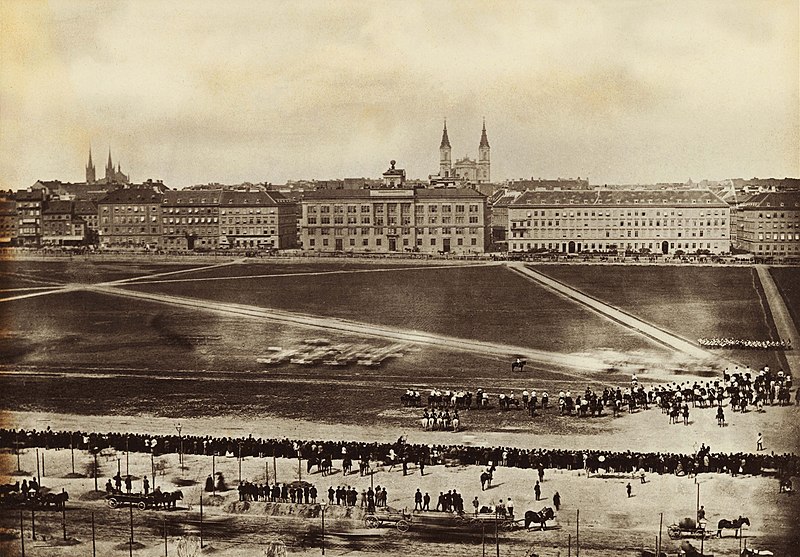
Building of the Militärgeographisches Institut, parade grounds, Josefstädter Glacis, Vienna, Austria, 1860.
The quality of the Habsburg mapping operation was greatly aided by its adaption of the Bessel ellipsoid which fits especially well to the geoid curvature of Europe. The ellipsoid data published by Friedrich Wilhelm Bessel, a professor of astronomy at the University of Königsberg, in 1841 were then the best and most modern data mapping the figure of the Earth. Because of the recognized high quality of their work, Austrian triangulation parties were admitted into neighboring countries. That work was reflected on Austrian topographic maps covering these areas.
 Globe on the roof of the building which housed the Militärgeographisches Institut until 1918.
Globe on the roof of the building which housed the Militärgeographisches Institut until 1918.
The Militärgeographisches Institut issued a number of iconic map series, including the Spezialkarte der Österreichisch-Ungarischen Monarchie im Masse 1:75 000. Eventually, 752 quadrangles of this legendary map series were produced, starting in 1873. After the collapse of the Austro-Hungarian Empire at the end of World War I Austria’s Kartographisches Institut, and Hungarian, Czechoslovak, and German mapping agencies continued to issue updated sheets.
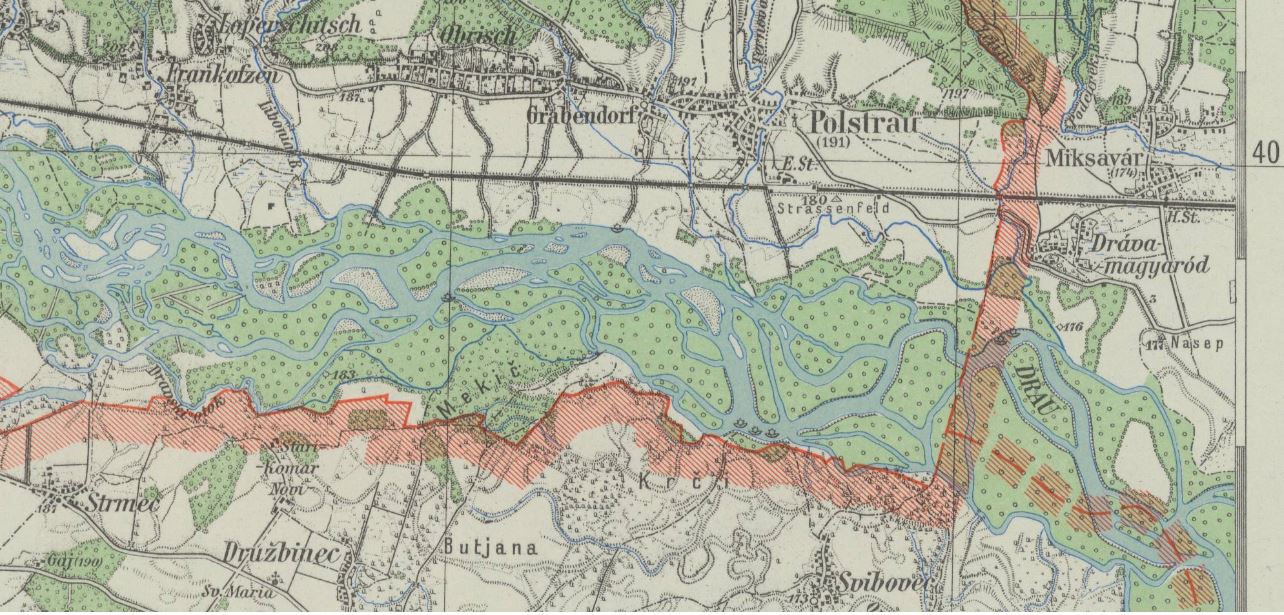
Spezialkarte 1:75 000, sheet # 5456 Pettau shows parts of the Drava river valley, with the borders of Nazi Germany, Hungary, and Croatia, last updated 1943 by a regional survey office of Germany’s civilian mapping agency Reichsamt für Landesaufnahme.
In March 1938 Nazi Germany annexed Austria. This was an important stepping stone in Adolf Hitler’s plans for waging a war of aggression. In Vienna the Nazi regime gained access to important resources and capabilities. German civilian and military mapping agencies moved quickly to incorporate Austrian government institutions active in the fields of surveying and cartography. The new Vienna office of Germany’s civilian Reichsamt für Landesaufnahme absorbed Austria’s well-regarded Kartographisches Institut. The German military incorporated the Austrian Army’s survey office.
Rather than reinvent the wheel German World War II military planners pragmatically worked within an established Austrian framework when they mapped parts of central and southeastern Europe. They continued to issue a number of Austrian map series with a long publishing history which reached far back into the 19th century. The Militärgeographisches Institut, defunct since 1918, cast a very long shadow.
A German military map series with more limited geographical coverage, the Spezialkarte von Österreich, von Ungarn, und der Tschechoslowakei 1:75 000, was published between 1935 and 1944. It was based on 1:75,000 source maps issued 1924-1939 by various Central European mapping agencies. During World War II, Spezialkarte sheets also provided the source map data for various other German military map series which covered large parts of central and southeastern Europe at a scale of 1:50,000.
The UC Berkeley Library acquired 420 sheets of this German military map series through the depository program of the U.S. Army Map Service (AMS) in the 1950s. U.S. Army military intelligence had collected these maps in Germany between October 1944 and September 1945, in the final months of World War II. Today these maps are part of UC Berkeley’s German World War II Captured Maps collection.
Lines of Latitude: German military map series Norwegen/Finnland 1:50 000 (1943-1944)
In 1961 University of California map librarian Sheila T. Dowd took stock: In an article published in the Special Library Association’s Geography and Map Division Bulletin she analyzed the growth of Berkeley’s map collection. Since 1917 its size had quadrupled. Growth came especially in the years following World War II.
Dowd found that the primary driver of that increase in size was Berkeley’s participation in the depository programs of the U.S. Army Map Service (AMS). And she highlighted the impact of the AMS World War II Captured Maps depository program. Ultimately 22,000 German and Japanese World War II maps found their way into Berkeley’s map collection. Most were topographic quadrangles published as part of military map series issued by Axis military mapping agencies.
Sometimes local German military bodies played important roles: Armee-Kartenstelle (mot.) 464 [= Army Maps Post (motorized) 464], served as mapping unit of the 20th German Mountain Army in Lapland during World War II. This area, northernmost Norway and Finland and adjacent areas of the Soviet Union, consisted of forbidding terrain, largely permafrost tundra.
A.K.St. (mot.) 464 produced the German military map series Norwegen/Finnland 1:50 000 to support German mountain troops fighting on the Eastern Front against the Soviet Red Army. One important challenge for the German military mapmakers was the need to document Arctic tundra freeze-thaw cycles. Winters north of the Arctic Circle are long and summers are short. The active layer of permafrost, the topmost layer of soil, thaws in the summer and freezes in the winter. This, of course, greatly affects military operations.
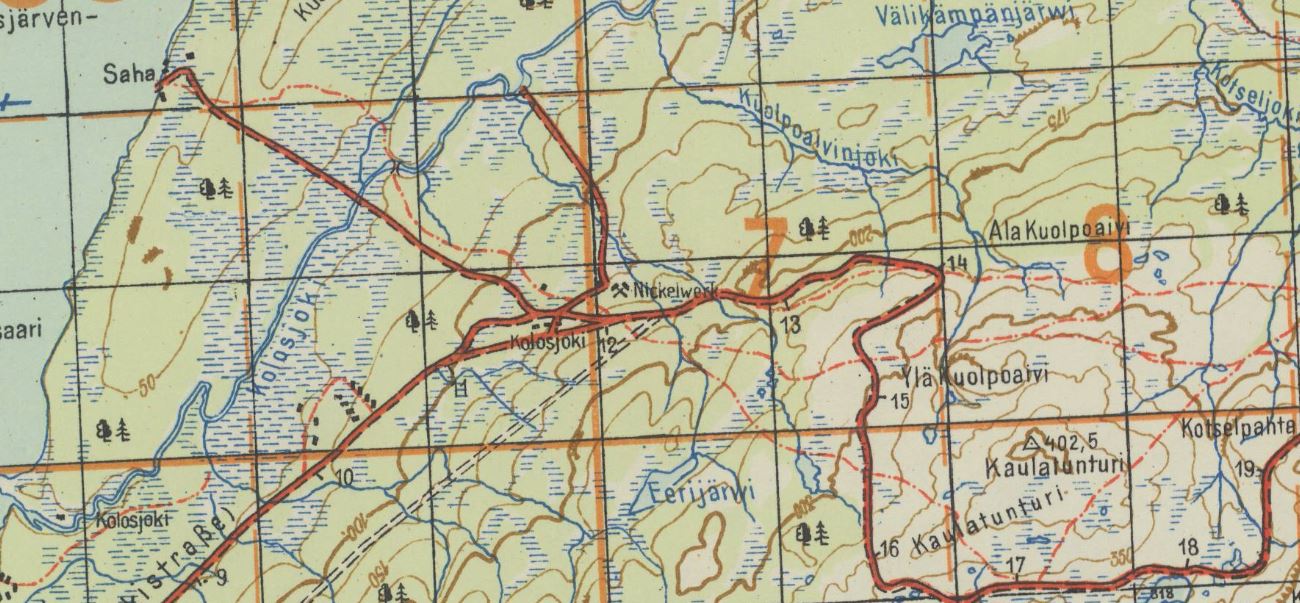 Kolosjoki quadrangle with 2 German military grids, Deutsches Heeresgitter [= German Army Grid], and Heeresmeldenetz [= Army Messaging Web] overprinted in orange. Shows “Nickelwerk,” a mine where nickel, a rare metal used as steel hardener, was extracted. The nickel deposits of northern Finland were important to the German war effort in World War II. This sheet was produced in October 1943.
Kolosjoki quadrangle with 2 German military grids, Deutsches Heeresgitter [= German Army Grid], and Heeresmeldenetz [= Army Messaging Web] overprinted in orange. Shows “Nickelwerk,” a mine where nickel, a rare metal used as steel hardener, was extracted. The nickel deposits of northern Finland were important to the German war effort in World War II. This sheet was produced in October 1943.
In 1942, Armee-Kartenstelle (mot.) 464 had a staff of 53. The unit compiled maps utilizing Finnish, Norwegian and Soviet source map data, aerial photographs of the Luftwaffe, and by performing field checks. It was motorized and equipped with trucks and half a trailer with the mapping and map printing equipment installed. Maps were chiefly printed in color.
A.K.St. (mot.) 464 established a base at Lager Neuer Kolonnenhof, a military camp of about 60-70 barracks, in Rovaniemi, Finland, in January 1942. The unit occupied a headquarters building, two garages for trucks, a workshop, a gas station and other barracks. As the frontlines approached in October 1944 German troops burned down the camp, and also much of the city of Rovaniemi, a war crime, and retreated to northernmost Norway.
Lines of Latitude: Plano del puerto de Sn. Francisco (1776)
The most wonderful nautical chart of San Francisco Bay is the very first one that was ever made, in 1776.
A manuscript map, pen-and-ink and watercolor. Attributed to José de Cañizares, a Spanish naval officer. Cañizares was an ensign on Juan Manuel de Ayala’s ship, the packet boat San Carlos, i.e. a transport.
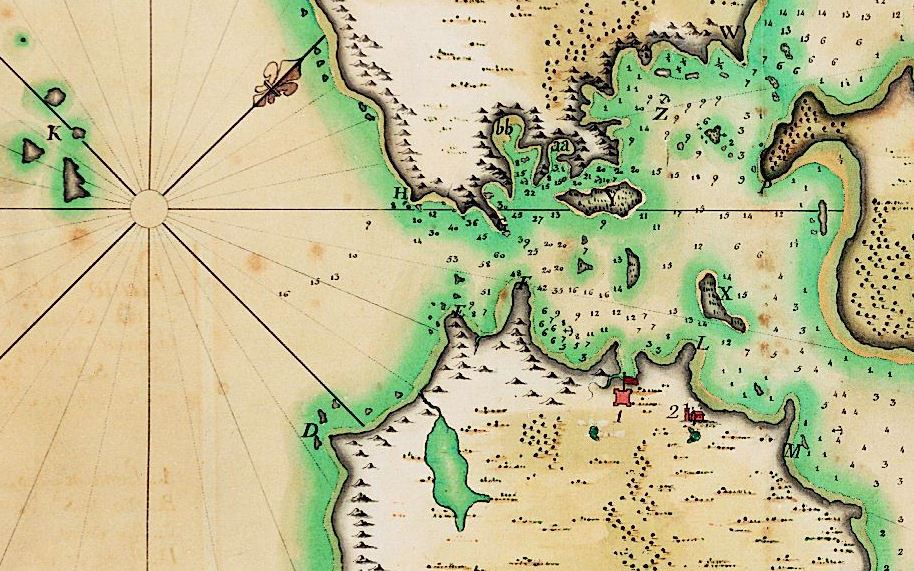
Plano del puerto de Sn. Francisco : situado por los 37. grs. 53 mins. de latitud septentrional, y por 17. grs. 10. mins. de longitud occidental del puerto de Sn. Blas: registrado por el paquebot de S.M. el Sn. Carlos al mando de Dn. Juan Manuel de Ayala, Teniente de Fragata de la Real (Real) Armada.
In 1768, the Spanish government drew up plans to built a naval base at San Blas, on the Pacific Coast of what is now Mexico, a bit north of Puerto Vallarta.
Three ships were sent north in 1775, for a Spanish expedition to explore the Pacific Northwest.
One of the ships was the transport San Carlos commanded by Juan Manuel de Ayala, the only Spanish ship to enter San Francisco Bay in 1775.
High resolution PDF:
https://www.lib.berkeley.edu/EART/maps/g4362s22_1776_c4.jpg
Image in the University of California’s digital collection:
https://digicoll.lib.berkeley.edu/record/58550
Various other nautical charts document the work of José de Cañizares in San Francisco Bay in 1775, including this one:
Plano del Puerto de San Francisco, registrado por el Paquebot de S.M. San Carlos, al mando del theniente de Fragata de la Real Armada Don Juan Manuel de Ayala, en esta año de 1775.
https://digicoll.lib.berkeley.edu/record/58549
Lines of Latitude: Sebastian Münster and his Cosmographia (1544)
Sebastian Münster, Hebrew scholar and theologian, was a curious man, a seeker and a risk taker. First a professor of Old Testament Studies, Münster reinvented himself. In 1536, he accepted a teaching position in mathematics at the University of Basel, in Switzerland.
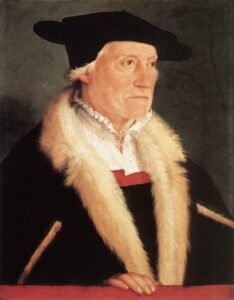
And Münster developed a sideline that came to define how we remember him today–he worked as a cartographer and cosmographer. Already in 1536, he released a Mappa Europae, later followed by a Latin edition of Ptolemy’s Geographia. But Sebastian Münster’s legacy is wrapped up in his Cosmographia of 1544, a book that managed the rare feat of being both scientific and popular. It was a runaway bestseller which described and explained the cosmos. In fact, it revolutionized how 16th century readers thought about the physical world.
From 1544 to 1628 the work passed through 40 editions in German, Latin, Czech, Italian, French and English and somehow persuaded educated Europeans to get interested in geography. Münster was assisted by more than one hundred and twenty collaborators. Famous woodcut artists contributed illustrations and that surely must have helped. The richly illustrated Latin version published in 1550 is the most prized edition today, in part because of its amazing city views.
But there was something else in the Cosmographia that rightfully fascinated readers: Four maps which struck a mortal blow at the medieval world view that ordered the physical world based on religious ideas. For centuries, medieval mappae mundi [= world maps] had depicted the known world, Asia, Africa and Europe, arranged in a Jerusalem-centered T-O design. Separate maps of individual continents were extremely rare in the European Middle Ages.
Münster made a radical choice. He insisted that this divinely ordered world, God’s creation, could be disassembled and depicted in parts, on different maps, which together would make up the known world. For his Cosmographia Sebastian Münster created four separate maps to depict the four known continents– the Americas, Africa, Asia and Europe. That includes his now famous depiction of the Western Hemisphere.
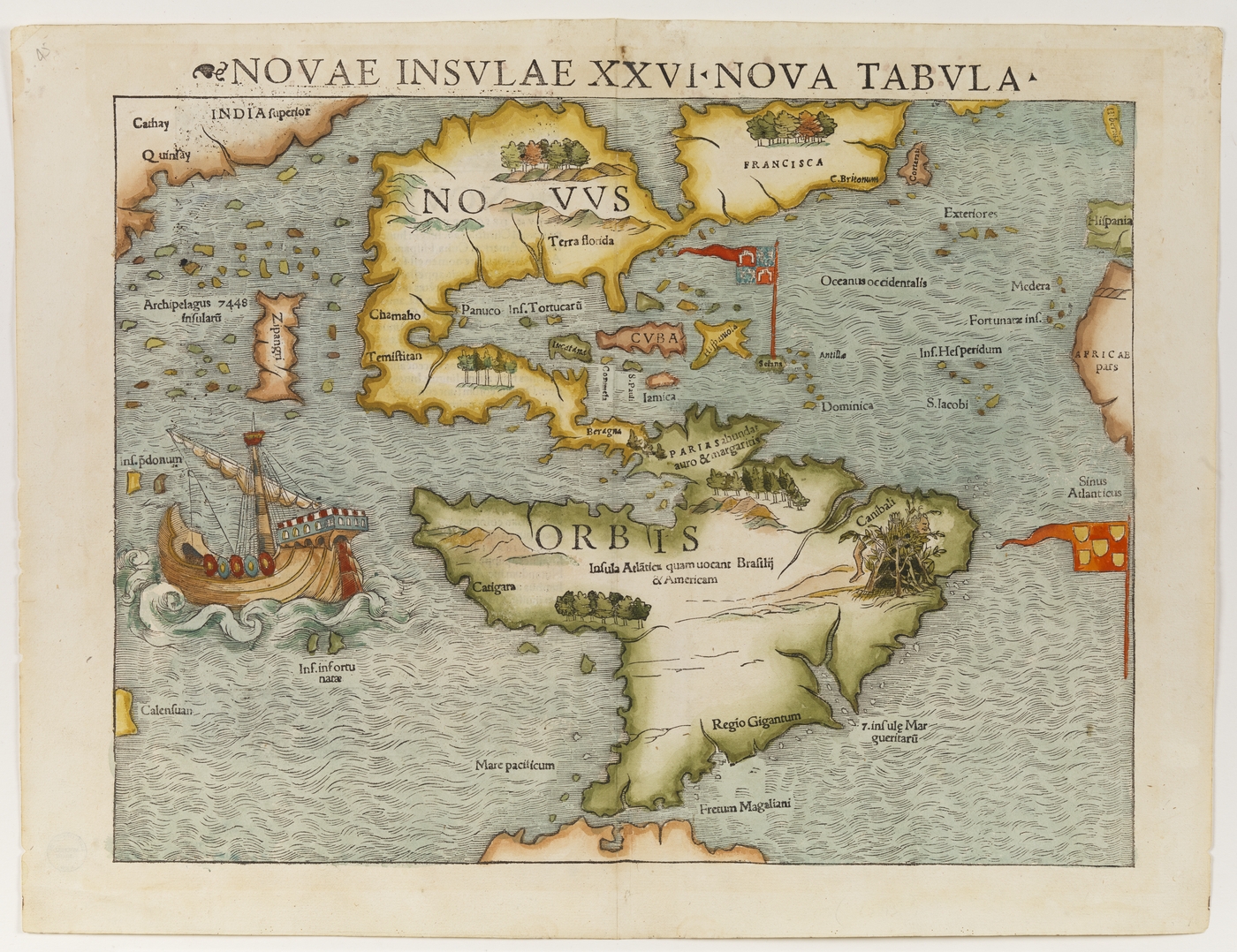
Lines of Latitude: Telling the Story of Maps
Why do maps speak to us?
Maps have explanatory power. They are visualization tools which help us to comprehend the social and physical world around us. They orient us. They impose order on chaos. But maps are also based on subjective choices made by cartographers who employ visualization techniques to reduce complexity. Cartographers create meaning by simplifying the social and physical world.
Cartography is a varied visual tradition which reaches back thousands of years. It emerged in different places and created the diverse mappy universe which we will explore through this map blog. Maps offer insights, a greater understanding of the world around us – and also of the past. And they are a window into the incredible biological and cultural diversity on this planet we call home.
The University of California Library at Berkeley just started the soft launch of our German World War II Captured Maps spatial humanities project which involves digitizing rich collections with about 20,000 maps, chiefly issued by German mapping agencies between the 1880s and 1945. That project will last into 2022 and our initial posts will focus on telling stories related to this important project.
But the Earth Sciences and Map Library at UC Berkeley is also located in a particular place, the East Bay, at the edge of the vast San Francisco Estuary, in northern California. Our small Bay Area world is connected to the larger world through Oakland’s vast commercial port. Transportation networks sustain our lives at the edge of the Pacific Ocean. Commuter ferries whiz across San Francisco Bay. We are close to some incredible physical spaces, the Marin Headlands, Muir Woods, Point Reyes National Seashore, several ranges of the Coastal Mountains.
The Ohlone are the predominant Indigenous group of the Bay Area. Spanish colonizers and the European diseases they brought to northern California undermined Ohlone existence and culture. In the wake of the Gold Rush the California state government sanctioned the murder of Indigenous populations by local militia. By the 1880s, the Bay Area Ohlone population was dramatically reduced.
Historically this area has been part of larger geographical frames, for example the Southwest, the borderlands of New Spain, Alta California, and the Western United States. We will look at how historical change has affected northern California.
And we are planning to explore many other worthwhile places and topics–the larger mappy universe. That is a world filled with surveyors, cosmographers, explorers, topographic engineers, mapping agencies, globes, atlases, aerial photography, satellite images, geological maps and rhumb lines, in short many worthwhile things.
Right now we are still working from our home offices, separated from the physical collections at the Earth Science and Map Library, in the middle of the COVID-19 pandemic. This also will be a place to publicize what is happening at the Earth Sciences and Map Library.
We hope you will find something enjoyable here and come along for the ride!
Bonita Dyess
Erica Newcome
Heiko Mühr
Susan Powell
Samantha Teplitzky